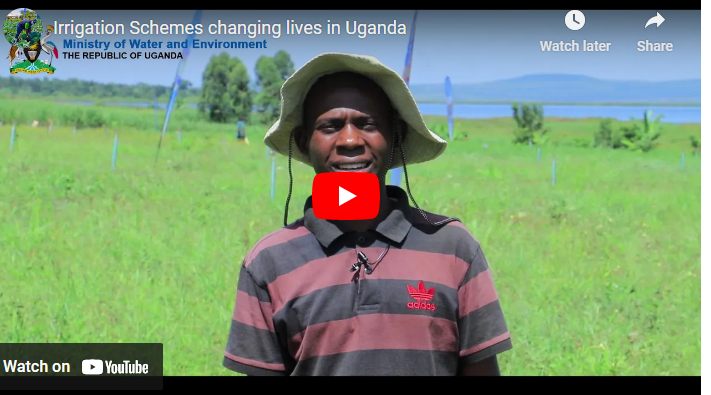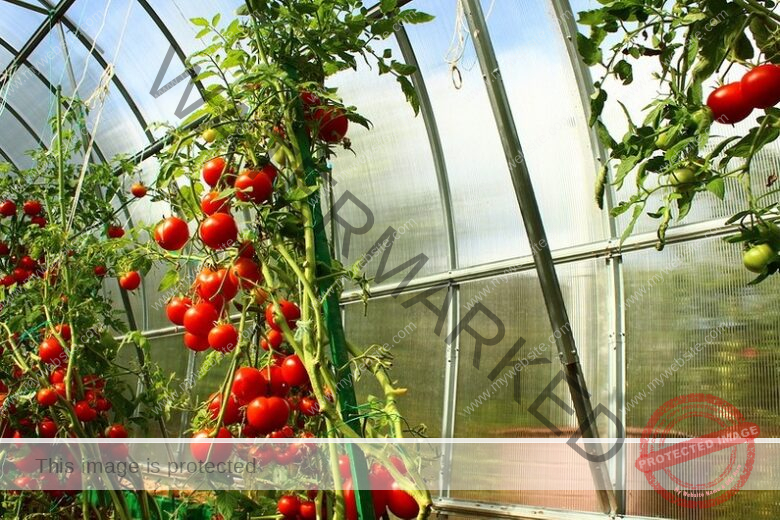This list comprises various irrigation schemes in Uganda, showcasing the country’s commitment to agricultural development and water resource management. These projects play a crucial role in enhancing food security, promoting sustainable farming practices, and empowering local communities.
With a diverse range of irrigation schemes scattered across Uganda’s landscapes, this compilation highlights the nation’s dedication to harnessing its water resources efficiently.
From small-scale initiatives to large-scale ventures, these schemes contribute significantly to boosting agricultural productivity, mitigating the impact of climate variability, and improving livelihoods.
Explore this comprehensive list to delve into the innovative irrigation efforts driving Uganda’s agricultural sector forward.
List of Irrigation Schemes in Uganda
In Uganda, irrigation schemes are crucial components of the country’s agricultural landscape. These schemes involve the systematic supply of water to agricultural fields to supplement rainfall and ensure consistent crop production.
Read Also: List Of Irrigation Schemes in Tanzania
They aim to address challenges related to water scarcity, unreliable rainfall patterns, and the need for increased food production.
The irrigation schemes in Uganda encompass a range of approaches, including small-scale projects for individual farmers, community-based initiatives, and large-scale commercial ventures.
The schemes typically involve the construction of canals, reservoirs, and pumping systems to distribute water effectively.
Read Also: List of Irrigation Schemes in South Africa
They play a vital role in enhancing agricultural productivity, promoting crop diversification, improving rural livelihoods, and strengthening food security in the country.
Here is a list of irrigation schemes in Uganda categorized as public and private:
#1. Public Irrigation Schemes
- Doho Rice Irrigation Scheme
- Mubuku Irrigation Scheme
- Kibimba Rice Irrigation Scheme
- Doho III Irrigation Scheme
- Olweny Rice Irrigation Scheme
- Wadelai Irrigation Scheme
- Tochi Irrigation Scheme
- Nyimur Irrigation Scheme
- Kibimba II Irrigation Scheme
- Doho I Irrigation Scheme
- Bugondo Irrigation Scheme
- Rwimi Irrigation Scheme
- Mubuku II Irrigation Scheme
- Agoro Irrigation Scheme
- Okile Irrigation Scheme
#2. Private Irrigation Schemes
- Kawumu Irrigation Scheme
- Kachwekano Zonal Agricultural Research and Development Institute
- Elegu Market Irrigation Scheme
- Bukanga Rice Irrigation Scheme
- Buliisa Rice Irrigation Scheme
- Amuru Irrigation Scheme
- Kasenyi Irrigation Scheme
- Atiak Sugar Irrigation Scheme
- Omoro Irrigation Scheme
- Kigezi Highland Tea Irrigation Scheme
- Mayuge Sugar Irrigation Scheme
- Buwenge Rice Irrigation Scheme
- Lango Tea Irrigation Scheme
- Ayago Irrigation Scheme
- Kasese Tea Irrigation Scheme
Please note that this is not an exhaustive list, as there may be additional irrigation schemes in Uganda beyond those mentioned here.
Types Of Irrigation Systems in Uganda
Here are the common types of irrigation systems in Uganda.
#1. Surface Irrigation Systems
- Basin Irrigation: Involves flooding an entire field with water, forming shallow basins around the crops.
- Furrow Irrigation: Water is distributed through channels or furrows, allowing it to flow across the field between the crop rows.
- Border Irrigation: Water is applied through border ridges, which contain the water as it spreads across the field.
- Contour Irrigation: Water is distributed along the contours of the field, minimizing soil erosion and maximizing water absorption.
- Flood Irrigation: Water is released and allowed to flood the entire field, typically used for paddy rice cultivation.
Read Also: List of Irrigation Schemes in Nigeria
#2. Sprinkler Irrigation Systems
- Center Pivot Sprinkler Systems: Water is distributed through sprinklers mounted on a central pivot that rotates around the field.
- Lateral Move Sprinkler Systems: Water is supplied through sprinklers mounted on a moving lateral line that travels along the field.
- Portable Sprinkler Systems: Portable sprinklers are manually moved to different locations in the field to supply water.
#3. Drip Irrigation Systems
- In drip irrigation, water is delivered directly to the plant’s root zone through a network of pipes and emitters, minimizing water loss and maximizing efficiency.
#4. Subsurface Irrigation Systems
- Subsurface Drip Irrigation (SDI): Similar to drip irrigation, but the driplines are buried underground to deliver water directly to the plant roots.
- Buried Clay Pot Irrigation: Clay pots are buried in the soil near plants, filled with water, and allow controlled seepage to provide moisture to the roots.
These various irrigation systems cater to different crop types, field conditions, and water availability.
Read Also: List of Irrigation Schemes in Kenya
Implementing a combination of these systems can enhance agricultural productivity, conserve water resources, and contribute to sustainable farming practices in Uganda.
Sources of Water for Irrigation in Uganda
#1. Rivers and Streams
Uganda is blessed with numerous rivers and streams that serve as important water sources for irrigation. Examples include the Nile, Victoria Nile, Albert Nile, and other smaller rivers.
Read Also: List of Irrigation Schemes in Kenya
#2. Lakes and Reservoirs
Uganda is home to several large lakes, such as Lake Victoria, Lake Albert, and Lake Kyoga, which provide significant water resources for irrigation.
More so, man-made reservoirs and dams, like the Owen Falls Dam on the Victoria Nile, contribute to irrigation water supply.
#3. Groundwater Sources
- Shallow Wells: Shallow wells, typically less than 30 meters deep, tap into the upper aquifers and provide access to groundwater for irrigation purposes.
#4. Deep Wells and Boreholes
Deep wells and boreholes are drilled to tap into deeper aquifers, allowing for more abundant and sustainable groundwater supply for irrigation.
#5. Rainwater Harvesting
Rainwater harvesting involves capturing and storing rainfall for later use in irrigation.
Techniques such as roof catchment systems, ponds, and tanks are employed to collect rainwater during the wet season for irrigation during dry periods.
#6. Wetlands and Swamp Areas
Wetlands and swamp areas in Uganda serve as natural water reservoirs, retaining water during the rainy season and gradually releasing it for irrigation during drier periods.
#7. Runoff and Rainfall-Induced Water Sources
Runoff from rainfall events and water collected from temporary ponds, marshes, and depressions formed during rainy periods can also be utilized for irrigation purposes.
Importance Of Irrigation Schemes in Uganda
- Enhanced Agricultural Productivity: Irrigation schemes play a vital role in increasing agricultural productivity by providing a reliable water supply to crops, reducing dependency on unpredictable rainfall patterns. This allows for multiple cropping seasons, increased crop yields, and improved food security.
- Diversification of Crops: Irrigation enables farmers in Uganda to grow a wide range of crops throughout the year, including cash crops and high-value crops. This diversification helps in reducing dependence on a single crop, increasing income opportunities, and promoting sustainable agricultural practices.
- Mitigation of Climate Variability: Irrigation schemes help mitigate the adverse effects of climate variability, such as droughts or irregular rainfall patterns. By providing a consistent water supply, these schemes help farmers adapt to changing climatic conditions and minimize crop losses.
- Employment and Poverty Alleviation: Irrigation schemes generate employment opportunities, both directly and indirectly, in agricultural activities, infrastructure development, and related services. This contributes to poverty reduction by providing income to rural communities and improving their livelihoods.
- Water Resource Management: Irrigation schemes promote efficient water management practices by utilizing water resources more effectively. Through the construction of canals, reservoirs, and water distribution networks, water is stored, controlled, and distributed efficiently to maximize its use in agriculture.
Benefits Of Irrigation Schemes in Uganda
- Increased Crop Yields: With access to consistent water supply, irrigation schemes enable farmers to achieve higher crop yields and reduce crop losses due to drought or insufficient rainfall. This leads to improved agricultural productivity and higher incomes for farmers.
- Crop Diversification and Commercialization: Irrigation allows farmers to diversify their crops, grow high-value crops, and engage in commercial farming. This leads to increased profitability, improved market opportunities, and reduced dependence on subsistence farming.
- Food Security: By ensuring a steady water supply, irrigation schemes contribute to food security in Uganda. They help stabilize food production, reduce post-harvest losses, and enhance the availability and accessibility of nutritious food throughout the year.
- Sustainable Water Resource Management: Irrigation schemes promote efficient use of water resources by minimizing wastage and optimizing water distribution. This aids in sustainable water management practices, conserves water resources, and mitigates conflicts over water use.
- Rural Development and Poverty Reduction: Irrigation schemes create employment opportunities, stimulate economic growth in rural areas, and contribute to poverty reduction. They support the development of rural infrastructure, improve access to markets, and enhance the overall socio-economic well-being of communities.
Impact Of Irrigation Schemes in Uganda
- Increased Agricultural Productivity: Irrigation schemes have contributed to increased agricultural productivity in Uganda. Farmers are able to cultivate crops throughout the year, leading to higher yields and improved food security.
- Income Generation and Poverty Alleviation: Irrigation schemes create employment opportunities, both directly and indirectly, leading to increased incomes for farmers and improved livelihoods. This helps in reducing poverty and promoting rural development.
- Crop Diversification and Market Opportunities: Irrigation allows farmers to diversify their crops and grow high-value crops. This opens up new market opportunities, enhances agricultural commercialization, and boosts the income potential for farmers.
- Water Resource Management: Irrigation schemes promote efficient water management practices by storing, controlling, and distributing water effectively. This contributes to sustainable use of water resources, reducing water wastage and mitigating conflicts over water allocation.
- Climate Resilience: Irrigation schemes help farmers mitigate the impacts of climate change by providing a reliable water supply during periods of drought or erratic rainfall. This improves the resilience of the agricultural sector to climate variability.
Limitations Facing Irrigation Schemes in Uganda
- Limited Access to Irrigation: Despite the presence of irrigation schemes, many farmers in Uganda still lack access to irrigation facilities. Limited infrastructure, inadequate funding, and logistical challenges restrict the expansion and reach of irrigation schemes.
- Inadequate Maintenance and Operation: Some irrigation schemes suffer from insufficient maintenance and operation, leading to issues such as leaks, inefficient water distribution, and reduced performance. This affects the effectiveness and sustainability of the schemes.
- Water Availability and Quality: Water scarcity and poor water quality can pose challenges to irrigation schemes in certain regions of Uganda. Insufficient water sources and contamination can impact the productivity and long-term viability of the schemes.
- High Energy Costs: In cases where irrigation schemes rely on pumping water, high energy costs can be a limiting factor. The expenses associated with running pumps and maintaining power supply infrastructure can make irrigation financially burdensome for some farmers.
- Land Tenure Issues: Land ownership and tenure conflicts can hinder the development and expansion of irrigation schemes. Unclear land rights and disputes may impede investment and long-term planning for irrigation projects.
Irrigation Schemes in Uganda PDF
The Irrigation Schemes in Uganda PDF provides valuable information on various irrigation projects across the country.
This comprehensive document outlines the diverse range of schemes implemented to promote agricultural development and water resource management.
By offering insights into the design, operation, and impact of these schemes, the PDF serves as a valuable resource for policymakers, researchers, and farmers interested in understanding and implementing effective irrigation practices in Uganda.
Doho Irrigation Scheme
The Doho Irrigation Scheme is located in eastern Uganda, in Butaleja district. It covers an area of 680 hectares and primarily grows rice, maize, and vegetables.
The scheme has improved food security in the area and created employment opportunities for local farmers.
However, the scheme has faced challenges such as water shortages during dry spells and inadequate infrastructure maintenance.
Rice Irrigation Schemes in Uganda
Rice is a significant crop in Uganda, and the government has invested in several irrigation schemes to promote its cultivation.
One such scheme is the West Nile Rice Irrigation Scheme, which covers an area of 6,000 hectares in the northwest of the country.
The scheme has created employment opportunities and increased rice production, contributing to food security in the region.
Mubuku Irrigation Scheme in Uganda
The Mubuku Irrigation Scheme is located in western Uganda, in Kasese district. It covers an area of 2,500 hectares and primarily grows maize and beans.
The scheme has improved yields and reduced crop failure due to drought, contributing to increased food security in the area.
Tilda Irrigation Scheme
The Tilda Irrigation Scheme is located in central Uganda, in the districts of Luwero and Nakasongola.
It covers an area of 3,800 hectares and primarily grows rice. The scheme has increased rice production and created employment opportunities for local farmers.
Nsimbe Irrigation Scheme
The Nsimbe Irrigation Scheme is located in eastern Uganda, in Kamuli district. It covers an area of 2,200 hectares and primarily grows rice.
The scheme has increased rice production and improved food security in the area.
However, the scheme has faced challenges such as land tenure conflicts and limited access to financing for infrastructure maintenance.
Lugazi Irrigation Scheme
The Lugazi Irrigation Scheme is located in central Uganda, in the district of Buikwe. It covers an area of 6,400 hectares and primarily grows sugarcane.
The scheme has contributed to increased sugarcane production and improved livelihoods for local farmers. However, the scheme has faced criticism for its impact on the environment and limited benefits for smallholder farmers.
Conclusion
This list of irrigation schemes in Uganda underscores the nation’s progressive strides in agricultural development. Through these diverse projects, Uganda demonstrates its commitment to sustainable farming practices, food security, and the empowerment of local communities. These initiatives are vital in securing a prosperous future for Uganda’s agricultural sector.




